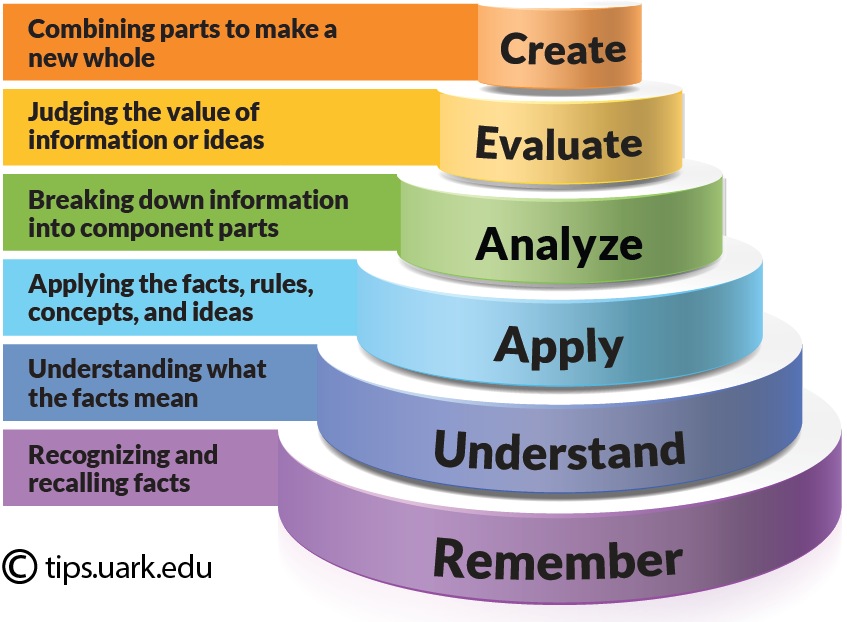Incorporate Higher Order Thinking via Bloom’s Taxonomy
in Blog Post
By Terri J. Matiella, Ph.D.
UTSA 2020-21 Next-Gen Faculty Fellow
Co-Director, Core Curriculum and Assessment for Environmental Science
Senior Lecturer, Department of Environmental Science and Ecology
Higher order thinking (HOT) is thinking on a level that is higher than memorizing or restating facts. It requires students to know and understand the facts, infer from them, and then connect them to other concepts. Here are some resources to help you incorporate HOT into your class via Bloom’s Taxonomy.
Bloom’s Taxonomy
Bloom’s taxonomy is a framework for categorizing educational goals. There are six categories, from lower level thinking of remembering and understanding up to higher order thinking skills of analyzing, evaluating, and creating.
Many K-12 curriculum is presented at the lower levels of Bloom’s taxonomy. Teaching our students about Bloom’s taxonomy can let them know the levels they should be able to work at in our classes. An asynchronous lesson on Bloom’s taxonomy can be made – or found – and assigned in Blackboard to present the material.
Many students study the same way they did in high school for lower level remembering assessments, and when they know they need to apply and evaluate concepts, they can change the way they study to better align with our expectations. One way to engage students is to have them write exam questions at different levels of Bloom’s taxonomy for a concept via a Discussion Board or Padlet. If they are good questions, use them on a quiz or exam!
Tags: Bloom’s Taxonomy, Higher Order Thinking, Incorporate Higher Order Thinking


